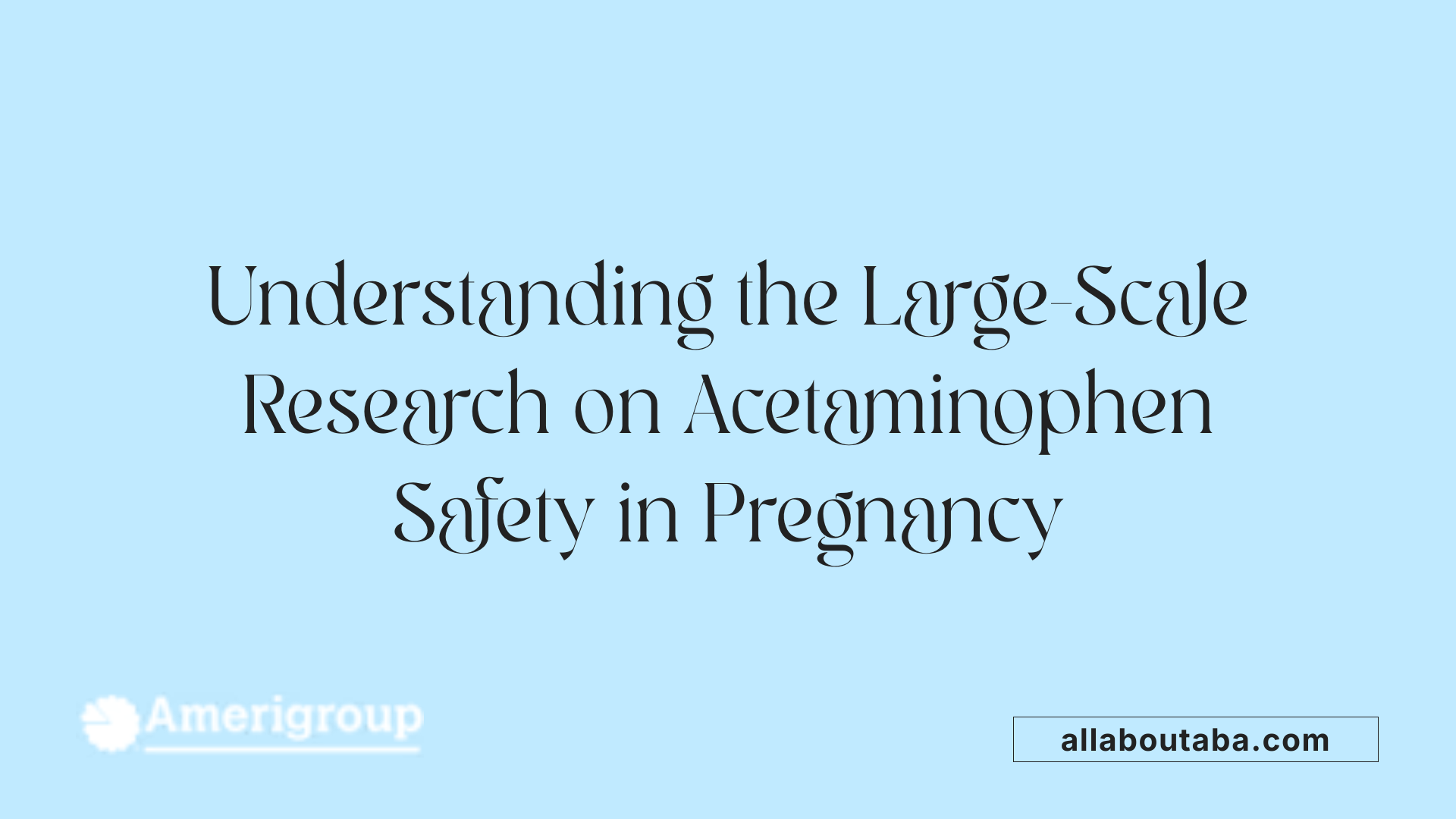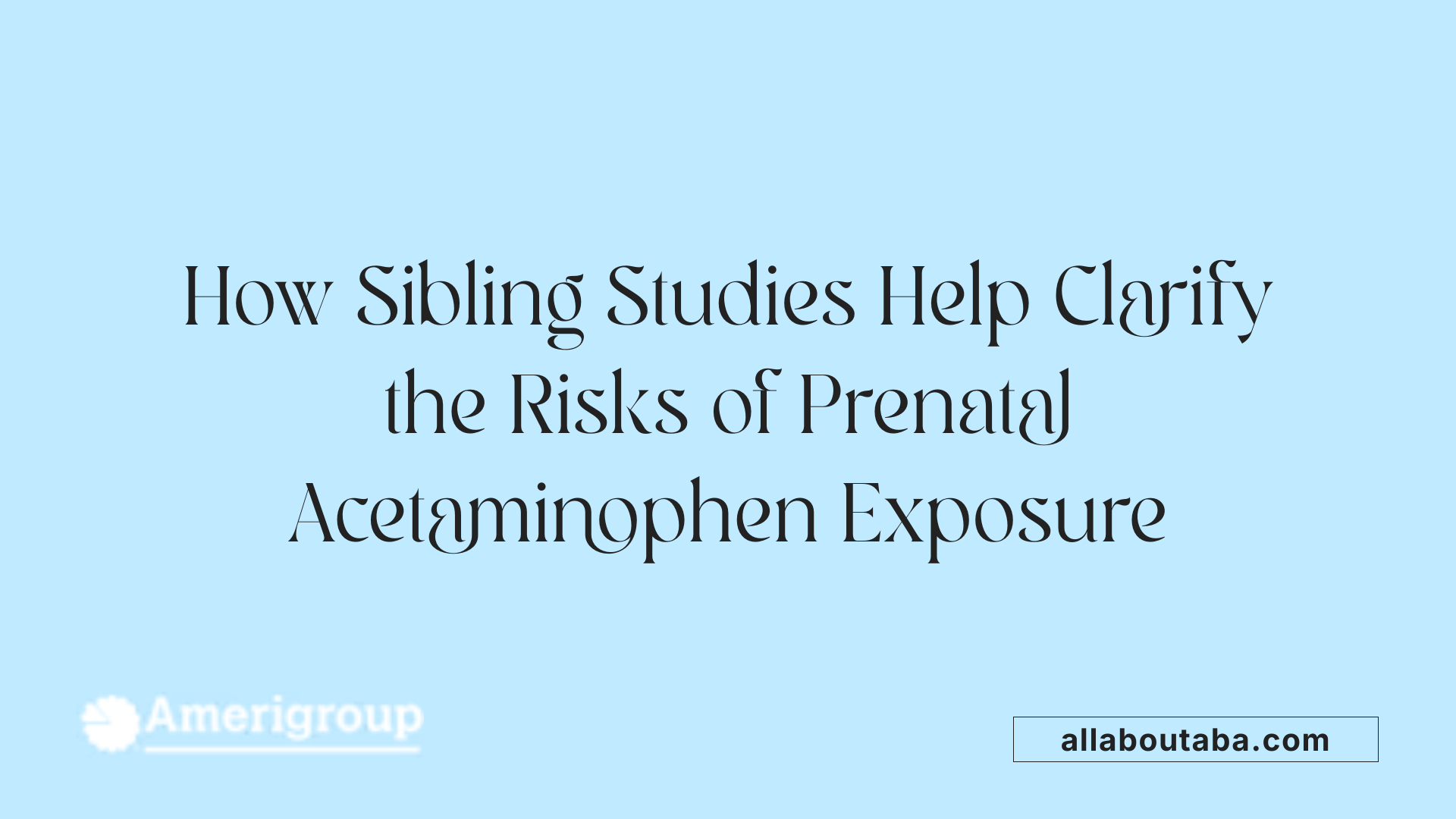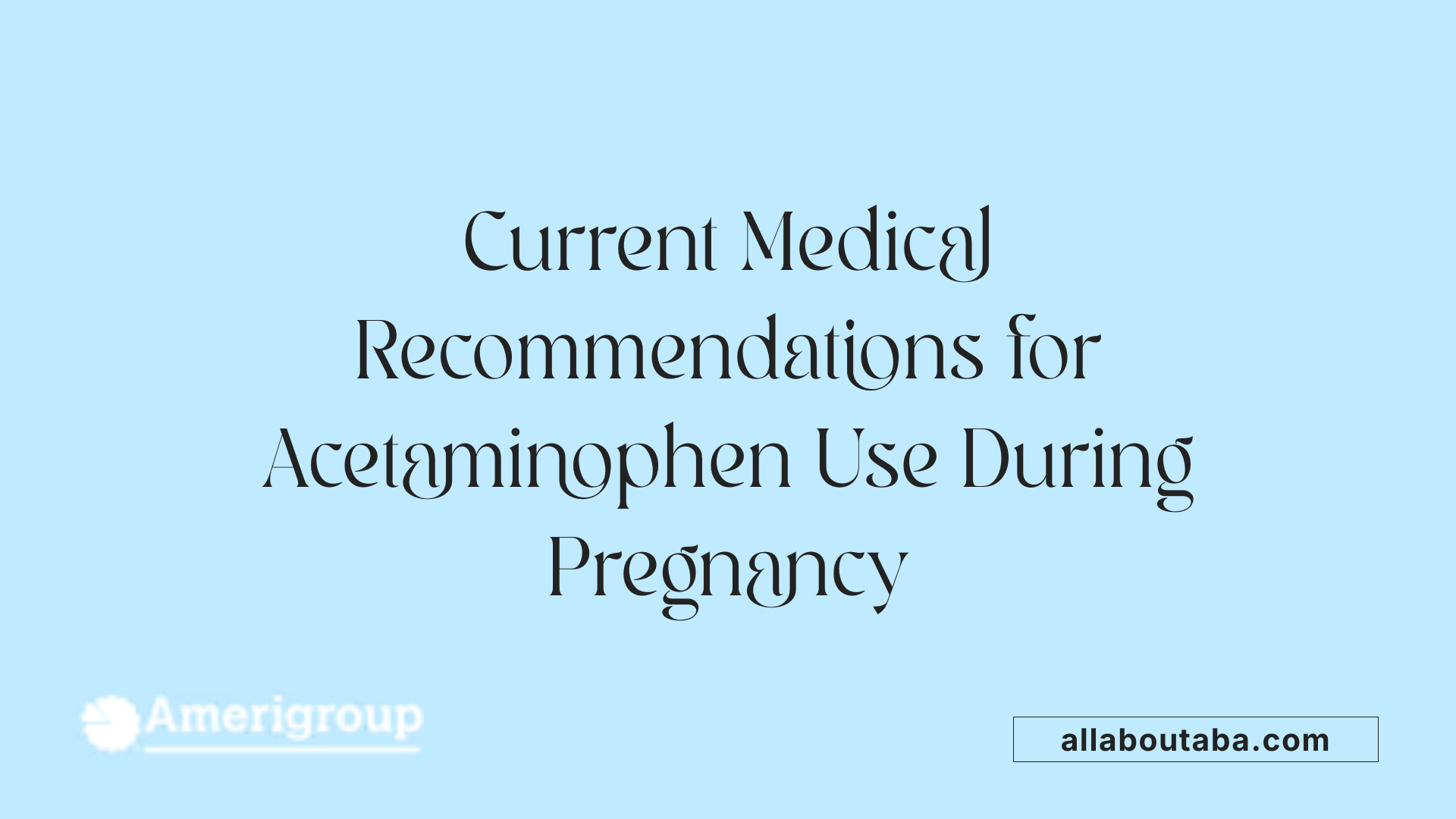Understanding the Complex Relationship Between Tylenol and Neurodevelopmental Disorders
Amid ongoing debates about the safety of Tylenol (acetaminophen) during pregnancy, recent research has examined its potential links to autism and ADHD. While acetaminophen is widely regarded as a safe over-the-counter medication, emerging studies have prompted a closer look at the possible neurodevelopmental implications for children exposed prenatally. This article provides a comprehensive review of current scientific evidence, including epidemiological studies, biological mechanisms, and expert consensus.
Recent Studies and Large-Scale Findings on Acetaminophen Safety During Pregnancy

Is Tylenol (acetaminophen) considered safe to use during pregnancy?
Acetaminophen, commonly known as Tylenol, is widely used for pain relief and fever reduction. In general, it is considered safe for pregnant women when used appropriately—that is, at recommended doses, for short periods, and upon medical advice. Major health organizations like the American College of Obstetricians and Gynecologists (ACOG) affirm that acetaminophen can be safely used during pregnancy but emphasize the importance of consulting healthcare providers.
Recent research has explored potential neurodevelopmental effects of prenatal acetaminophen exposure. Large population-based studies from Sweden and the US, including over 2.4 million children, have not found conclusive evidence linking acetaminophen use during pregnancy with an increased risk of autism, ADHD, or intellectual disabilities.
For example, a 2024 Swedish study analyzed sibling pairs to control for shared genetic and environmental factors. The findings showed no significant increased risks for neurodevelopmental disorders among children whose mothers used acetaminophen during pregnancy. Similarly, a Johns Hopkins-led US study measured biomarkers in umbilical cord blood and found dose-dependent associations with increased risks of ADHD and autism spectrum disorder, suggesting a potential link. However, these associations do not establish causation.
It is important to acknowledge the limitations of current studies, including reliance on prescription and self-reported data, which may underestimate actual use. The U.S. Food and Drug Administration (FDA) and other expert bodies maintain that the current evidence does not warrant restrictions on acetaminophen during pregnancy. They prioritize treating fever and pain to prevent risks associated with unmanaged symptoms.
In conclusion, short-term, appropriate use of acetaminophen remains generally safe during pregnancy. Nonetheless, ongoing research continues to evaluate potential risks. Pregnant women are advised to follow medical guidance and use acetaminophen only when necessary, avoiding high doses or prolonged use based on current evidence supported by medical experts.
Recent Evidence Supporting a Potential Link to Neurodevelopmental Disorders
Findings from the Boston Birth Cohort and Related Studies
Recent research utilizing data from the Boston Birth Cohort has shown notable associations between acetaminophen exposure during pregnancy and increased risks of neurodevelopmental disorders in children. In this study, researchers measured biomarkers of acetaminophen in umbilical cord blood from 996 births, enabling a direct assessment of fetal exposure levels.
Children with the highest tertile of acetaminophen levels in cord blood had significantly higher odds of developing ADHD and autism spectrum disorder (ASD). Specifically, the risk of ADHD was about 2.86 times greater, while ASD risk was approximately 3.62 times higher in these children compared to those with the lowest exposure levels.
These findings are supported by larger studies involving thousands of children across different cohorts, which also observed a correlation between prenatal acetaminophen use and neurodevelopmental outcomes. The consistency of results underscores the importance of examining fetal exposure as a potential influencing factor.
Increased Risks of ADHD and Autism Spectrum Disorder (ASD) with Higher Exposure Levels
Research consistently reports that increased prenatal exposure to acetaminophen correlates with higher chances of developing conditions like ADHD and ASD. One pivotal study, involving over 73,000 European mother-child pairs, found that children in the highest exposure group displayed approximately twice the risk of ADHD and about 1.19 times the risk of ASD symptoms.
Interestingly, the risk appears dose-dependent, with higher biomarker levels in cord blood indicating a greater likelihood of neurodevelopmental issues. These associations persist even after accounting for confounding factors such as maternal health, socioeconomic status, and other environmental influences.
Biomarker Studies Measuring Acetaminophen in Cord Blood
Unlike previous surveys relying on maternal self-reporting, recent studies utilize biomarkers to measure fetal exposure precisely. Biomarkers such as acetaminophen and its metabolites detected in umbilical cord blood provide concrete evidence that the fetus was exposed during pregnancy.
These biomarker-based studies show a clear dose-response relationship, where higher concentrations of acetaminophen metabolites are associated with increased risks of ADHD and ASD. They also help rule out recall bias, strengthening the evidence for a potential biological link.
| Study | Sample Size | Main Findings | Exposure Measurement | Risk Increase |
|---|---|---|---|---|
| Boston Birth Cohort | 996 births | Higher cord blood acetaminophen linked to increased ADHD & ASD risk | Biomarkers in umbilical cord blood | 2.86x for ADHD, 3.62x for ASD |
| European Cohorts | 73,881 pairs | Dose-dependent relationship between prenatal acetaminophen and neurodevelopmental symptoms | Maternal questionnaires & biomarkers | 1.19x for ASD symptoms, 2x for ADHD |
These recent advancements support a more nuanced understanding of how fetal exposure might influence neurodevelopment. While they do not definitively prove causation, they highlight the importance of further research, especially regarding safe medication use during pregnancy.
The Role of Sibling Studies and Causal Inference

Sibling control studies
Sibling studies compare brothers and sisters within the same family to understand the effects of prenatal exposures like acetaminophen. By analyzing siblings, researchers can control for shared genetic background and environmental factors that influence neurodevelopmental outcomes.
One prominent study examined over 2 million children born in Sweden, assessing whether differences in acetaminophen exposure during pregnancy among siblings were linked to autism or ADHD. The findings showed no increased risk in sibling comparisons, suggesting that earlier associations observed in broader population studies might be confounded by familial factors.
Distinguishing correlation from causation
Many studies initially reported a connection between acetaminophen use in pregnancy and neurodevelopmental disorders. However, correlation does not imply causation. Factors such as parental genetics, socioeconomic status, and health behaviors can influence both medication use and child development.
Sibling studies help clarify this by controlling for these confounders. When these analyses show no increased risk, it indicates that previous associations could be due to underlying familial traits rather than a direct effect of the medication.
Gene-environment interactions
The insights from sibling research highlight the importance of genetic and environmental interplay in neurodevelopment. For example, parents with neurodevelopmental disorders are more likely to use acetaminophen during pregnancy, and their children may inherit genetic predispositions. Thus, the apparent link might be rooted in inherited traits rather than the medication itself.
Understanding these interactions aids in accurately assessing risks and guiding advice for pregnant women. Currently, evidence suggests that acetaminophen does not causally increase the risk of autism or ADHD when familial factors are considered, supporting its safe use under medical guidance.
| Aspect | Details | Additional Notes |
|---|---|---|
| Study Focus | Comparing siblings with different exposure levels | Controls for genetic/environmental confounders |
| Key Finding | No increased risk in sibling pair analysis | Challenges earlier population-based associations |
| Implication | Risks attributed more to genetics and environment | Reinforces safety of acetaminophen with medical advice |
Biological Mechanisms and Theories Behind Possible Risks

Are there biological mechanisms that could explain a link between Tylenol and autism or ADHD?
Some scientific hypotheses suggest that acetaminophen might impact neurodevelopment through interference with the endocannabinoid system. This system plays a crucial role in brain development, synaptic plasticity, and neural signaling. Disruption of this system during sensitive periods of fetal growth could potentially lead to behavioral or cognitive outcomes linked to autism spectrum disorder (ASD) and attention-deficit/hyperactivity disorder (ADHD).
Animal studies bolster this hypothesis by showing that interfering with the endocannabinoid system during key developmental stages can lead to behavioral changes akin to neurodevelopmental disorders. These findings provide a biological basis for considering how acetaminophen might influence brain development, although such effects have not been conclusively demonstrated in humans.
In addition to its impact on the endocannabinoid system, acetaminophen is suspected of causing endocrine disruption. Hormonal influences are vital during fetal growth, and alterations in endocrine signaling might affect neural development adversely.
While these potential mechanisms offer a biologically plausible explanation, current evidence in human populations remains limited. Researchers highlight the need for further studies to thoroughly investigate these pathways, including direct measurements of biological changes in fetal or neonatal tissues exposed to acetaminophen. Understanding these mechanisms will be key to determining whether the associations observed in epidemiological studies reflect causation or are linked through shared genetic and environmental factors.
Current Medical Consensus and Guidance

Is Tylenol (acetaminophen) considered safe to use during pregnancy?
Acetaminophen, the active ingredient in Tylenol, is widely regarded as a safe pain reliever and fever reducer for pregnant women when used correctly. Many health organizations, including the American College of Obstetricians and Gynecologists (ACOG), support its use, emphasizing that pregnant individuals should follow their healthcare provider’s guidance. The current evidence from large studies suggests that short-term and appropriate use of acetaminophen does not cause harm or increase the risk of neurodevelopmental disorders such as autism or ADHD.
However, recent research has raised questions about potential risks, including effects on fetal development. Some animal studies and observational research indicate that high or prolonged exposure may influence neurodevelopment, possibly through disruption of the endocannabinoid system. Despite these concerns, these studies do not establish a causal link, especially when considering the large-scale, sibling-controlled studies that have found no increased risk attributable solely to acetaminophen.
Medical experts at institutions like UT Southwestern recommend using acetaminophen only when necessary, avoiding excess or long-term use. They also advise pregnant women to discuss any medication use with their healthcare provider, balancing the benefits of fever or pain relief against any potential risks.
In summary, current guidance supports the safe, limited use of acetaminophen during pregnancy, provided it is taken as directed. Ongoing research continues to explore the topic, but present evidence does not warrant avoiding acetaminophen when medically indicated.
Navigating the Evidence and Making Informed Choices
While the scientific community continues to investigate the potential risks of prenatal acetaminophen exposure, current evidence does not establish a definitive causal link to autism or ADHD. The most comprehensive studies, including sibling control analyses, suggest that familial and genetic factors play a significant role, and that acetaminophen remains a safe option for pain and fever management when used prudently. Pregnant women should follow medical guidance, weigh the benefits of symptom relief against potential risks, and stay informed as new research emerges.
References
- Acetaminophen Use During Pregnancy and Children's Risk of ...
- NIH-funded study suggests acetaminophen exposure in pregnancy ...
- Research shows no causal link between Tylenol and autism
- Taking Tylenol during pregnancy associated with elevated risks for ...
- Child ADHD risk linked to mother's use of acetaminophen -
- Acetaminophen Use for Fever in Children Associated with Autism ...
- No link between acetaminophen use during pregnancy and ...
- No Link Between Acetaminophen and Risk for Autism, Study Finds







